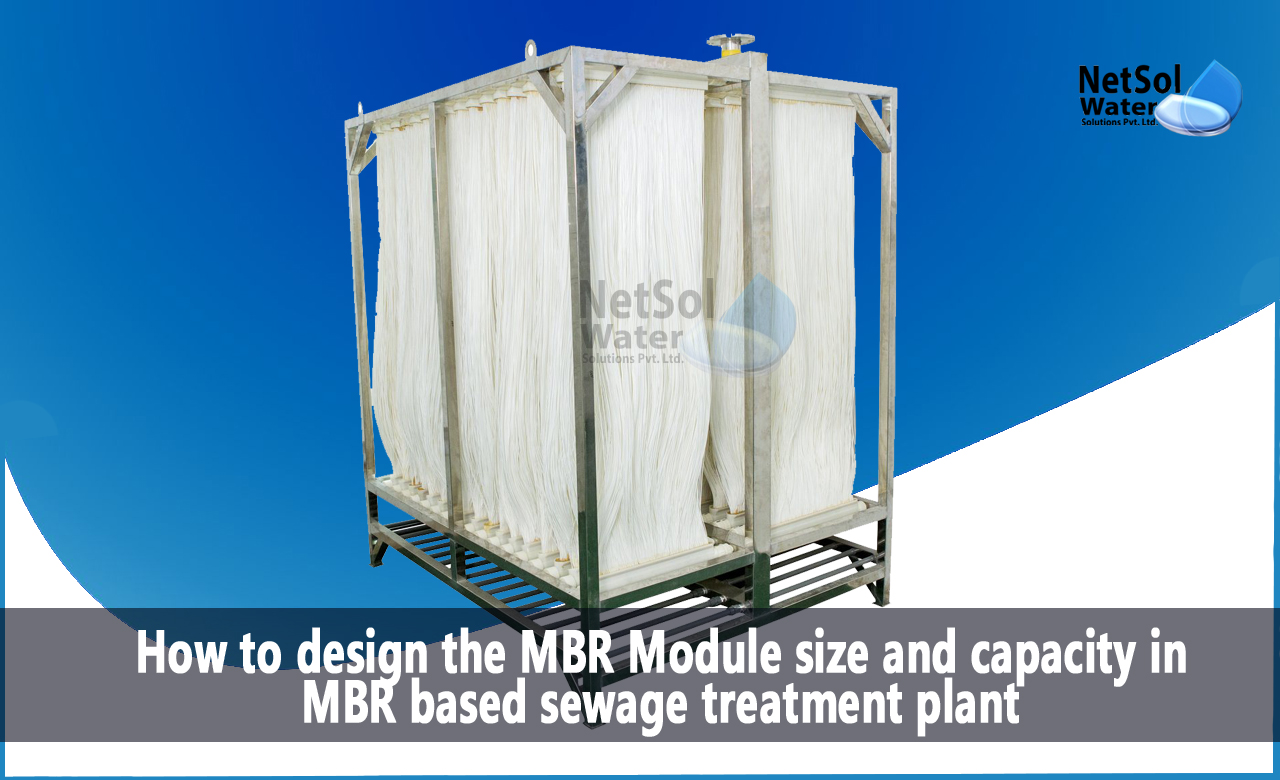How to design the MBR Module size and capacity in the MBR STP plant?
Membrane Bio-Reactor (MBR) is a highly effective and advanced technology used for sewage treatment plants. MBR is a combination of biological treatment and membrane filtration, where biological processes remove the pollutants, and membrane filtration removes suspended solids and bacteria. The MBR technology has several advantages over conventional sewage treatment methods, including high-quality effluent, smaller footprint, and ease of operation.
In this blog, we will discuss how to design the MBR module size and capacity in MBR based sewage treatment plants.
Design Basis for MBR Module Size and Capacity
The design basis for MBR module size and capacity includes several factors, including the flow rate of the sewage, the quality of the sewage, the required effluent quality, and the available space for the plant. The MBR module size and capacity must be designed to handle the flow rate of the sewage while ensuring that the effluent quality meets the required standards. The available space for the plant must also be considered when designing the MBR module size and capacity.
Formula for MBR Module Size and Capacity
The formula for determining the MBR module size and capacity is based on the flow rate of the sewage, the required hydraulic retention time (HRT), and the membrane flux rate. The HRT is the time required for the sewage to pass through the MBR module, and the membrane flux rate is the amount of permeate that can be produced per unit area of the membrane per unit time.
The formula for determining the MBR module size and capacity is as follows:
MBR Module Size = Flow Rate × HRT / Membrane Flux Rate
The flow rate of the sewage is measured in cubic meters per day (m3/day), and the HRT is measured in hours. The membrane flux rate is measured in liters per square meter per hour (L/m2.h). The formula provides the MBR module size in square meters (m2).
Designing the MBR Module Size and Capacity
The design of the MBR module size and capacity involves several steps, including determining the flow rate of the sewage, the required effluent quality, the available space for the plant, and the membrane flux rate.
Step 1: Determine the Flow Rate of the Sewage
The flow rate of the sewage is determined based on the population served by the sewage treatment plant. The flow rate is measured in cubic meters per day (m3/day).
Step 2: Determine the Required Effluent Quality
The required effluent quality is determined based on the discharge standards for the treated effluent. The required effluent quality is measured in terms of parameters such as BOD, COD, TSS, and turbidity.
Step 3: Determine the Available Space for the Plant
The available space for the plant is determined based on the site conditions and the land available for the plant.
Step 4: Determine the Membrane Flux Rate
The membrane flux rate is determined based on the manufacturer's specifications for the membrane module.
Step 5: Determine the MBR Module Size and Capacity
Using the formula mentioned above, the MBR module size and capacity are calculated based on the flow rate of the sewage, the required HRT, and the membrane flux rate.
Conclusion:
In conclusion, designing the MBR module size and capacity is a critical aspect of MBR based sewage treatment plant design. The MBR module size and capacity must be designed to handle the flow rate of the sewage while ensuring that the effluent quality meets the required standards. The formula for determining the MBR module size and capacity is based on the flow rate of the sewage, the required hydraulic retention time (HRT), and the membrane flux rate. The MBR technology is an advanced and highly effective sewage treatment method, and proper design of the MBR module size and capacity is crucial for the success of the plant. With the proper design of the MBR module size and capacity, the MBR technology can provide high-quality effluent, smaller footprint, and ease of operation for sewage treatment plants.
Get in touch with us by placing a call at +91-9650608473 or email at enquiry@netsolwater.com



